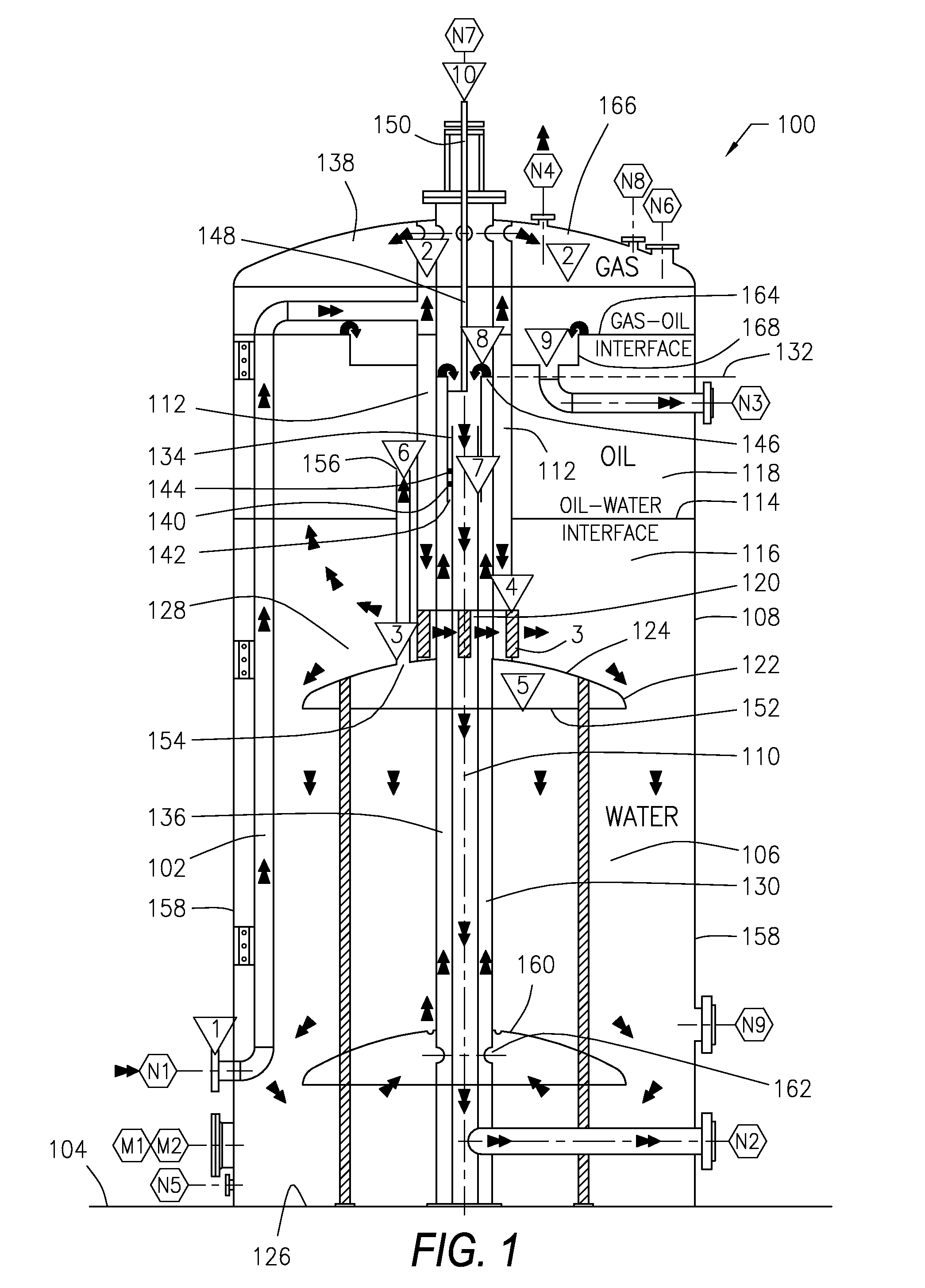Apparatus for separating oil well products
a technology for oil well products and accessories, applied in the direction of separation process, liquid displacement, borehole/well accessories, etc., can solve the problems of affecting the operation of the oil well, the separation process is not smooth, and the oil level or height of the oil well is not adjustable. , to achieve the effect of preventing re-entrainment, preventing tank overflow and oil spills, and preventing re-entrainmen
- Summary
- Abstract
- Description
- Claims
- Application Information
AI Technical Summary
Benefits of technology
Problems solved by technology
Method used
Image
Examples
Embodiment Construction
[0029]Referring now to FIG. 1, there is illustrated a separator apparatus 100 for separating oil well products. This is an atmospheric oil, water and gas separator 100 designed for separating applications such as those found in the oil field. Although the invention is described for use with oil field products, the invention is not so limited and could be used for other applications.
[0030]The separator 100 is a cylindrical tank or vessel 108 with an inlet 1 located near ground or grade level 104. The inlet 1 that admits the oil well products or fluids via inlet piping N1 into internal piping 102 contained within the tank 108. The fluids flow through the piping 102 and come to a center conduit 112 which extends upward into a degassing chamber 2 to which entrained gases in the fluid can rise. Gases that accumulate in the degassing chamber 2 exit the tank 108 via a gas outlet N4 provided in the top 138 of the tank 108. The center conduit 112 also extends downward to terminate at tank fl...
PUM
| Property | Measurement | Unit |
|---|---|---|
| Pressure | aaaaa | aaaaa |
| Height | aaaaa | aaaaa |
Abstract
Description
Claims
Application Information
 Login to View More
Login to View More - R&D
- Intellectual Property
- Life Sciences
- Materials
- Tech Scout
- Unparalleled Data Quality
- Higher Quality Content
- 60% Fewer Hallucinations
Browse by: Latest US Patents, China's latest patents, Technical Efficacy Thesaurus, Application Domain, Technology Topic, Popular Technical Reports.
© 2025 PatSnap. All rights reserved.Legal|Privacy policy|Modern Slavery Act Transparency Statement|Sitemap|About US| Contact US: help@patsnap.com



